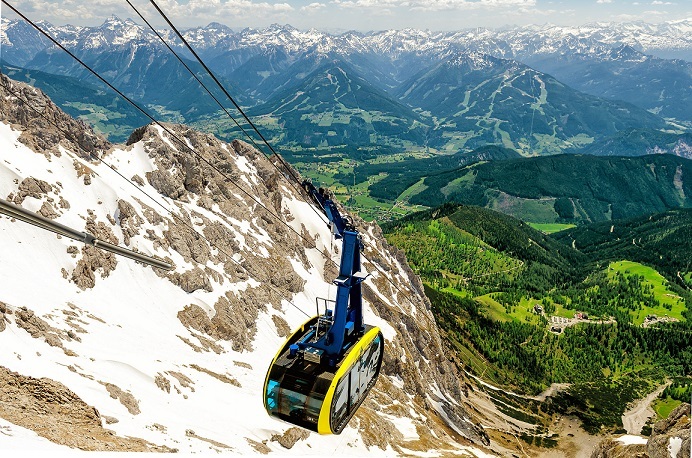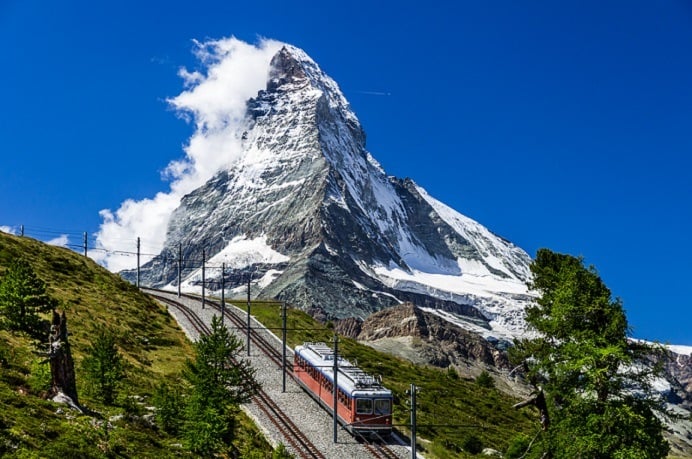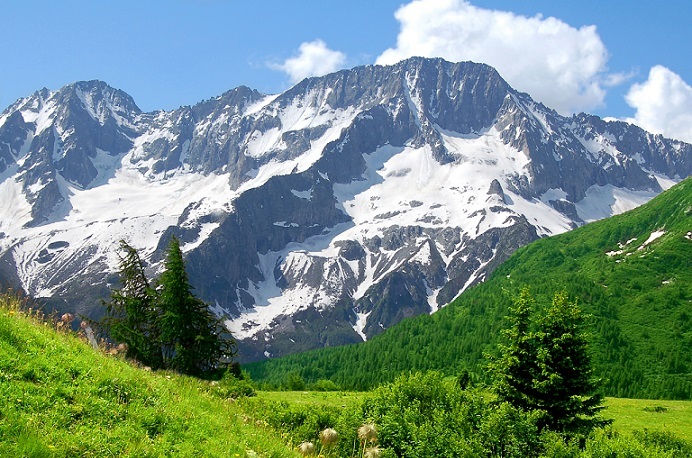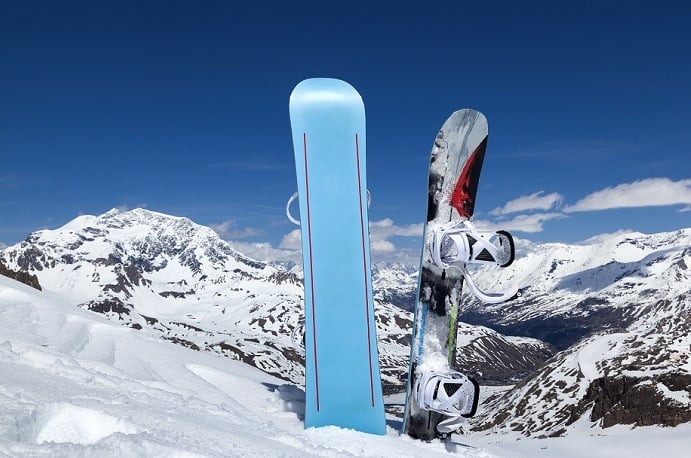‘Summer skiing’ may sound like a contradiction but there’s a lot going for it. Heading off to ski glaciers in the summer months means smaller crowds, runs for all abilities and après ski that doesn’t just involve drinking your body weight in booze. There’s adrenaline, action, a sense of novelty, increased self-confidence and plenty of fun to be had at the end of a summer skiing day.
Why choose summer skiing?
Good question: why should one choose to ski or snowboard in summer? Well, here’s why:
- It’s always crowded in winter. So instead of congested, fearful queues of skiers and snowboarders, you can finally feel at ease. Take it slowly if you’re a beginner — fall down 100 times but master that devilish snowboard. If you’re more advanced, you can truly shred the gnar gnar with more space to move.
- Fancy a cuppa and some banter with an Olympic skier or shredder? I can’t guarantee they’ll take a liking to the tea, but yes, the chances of meeting such professionals and learning a few tricks are actually very high. Many teams will choose the glaciers to practice on over summer and get ready for the proper season competitions.
- Most snow retailers will have clearances at this time of year. This is a great opportunity to get hold of some quality equipment at more than affordable prices. While it’s true that you can play it brave and do without a snow jacket thanks to the warming sun, think in advance and buy your winter equipment now. Snow goggles and helmets are a must — sunglasses don’t offer any wind protection while whizzing down the slope, and might fall off. Goggles are better secured and there are special lenses for bright, sunny days: choose brown, grey, blue or polarized lenses. Most retailers are able to offer reliable advice either through their staff or their detailed online guides.
- You can get involved in other activities, maximizing your holiday. Summer skiing or snowboarding are morning activities. Due to the high altitude of the glaciers, the strong noon and afternoon sun will make the snow slushy and potentially dangerous. In general, all the glacier ski resorts will close around 1–2 p.m. This means there’s plenty of time left for a recovery lunch and nap, followed by other activities like climbing, trekking, mountain biking, rafting, kayaking, or simply dipping your toes in a swimming pool.
- You’re cool. By doing something that you might normally not do, you’re pulling yourself out of your comfort zone and strengthening your self confidence.
Where to go?
The stunning glacier landscapes and the glamor of the après ski strangely projected on a somewhat medieval background make Europe one of the top and most easily accessible summer skiing locations. Austria, Switzerland, Italy and France all have prime spots.
Austria
The most well known Austrian resources are Neustift, Kaprun, Hintertux, and Ramsau am Dachstein. This resource here will give you plenty of details on each of these resorts and some more. Those heading to the Hintertux glacier will get to try the so-called “Gletscherbusse” — glacier buses — the gondola lifts that are responsible for carrying tourists. The Stubaier glacier will entice with an ice grotto — a dive into the heart of the glacier. The entrance fee is a mere five euros, and children under 10 go free. More info here.
Switzerland
Lying at the foot of the Matterhorn, Zermatt is usually the first resort on the list for a Swiss trip. But do some research first (start with this), otherwise you might miss the Metro Alpin — the railway in the Saas Valley that takes passengers to the world’s highest revolving restaurant. Fancy that, right?
Italy
Breuil-Cervinia is the top glacier destination in Italy. It lies at the foot of the same glacier as Switzerland’s Zermatt – known in this part as Monte Cervino – hence the very name of the resort/village. The resort seems to be highly appreciated by golf lovers: there’s an 18-hole golf course — the highest in Italy — right at the foot of the Matterhorn.
Passo Tonale and Val Senales are other top destinations.
France
Les Deux Alpes and Tignes are the heroes of French summer skiing. Les Deux Alpes owes its fame to being the largest skiable glacier in Europe with an 800 meter vertical descent. More info here.
Tignes is imbued with history. The first and original village of Tignes was situated in the Isere Valley, but got submerged after the World War II when a dam was built in the valley to produce electricity. Snow hedonism aside, Tignes is treasured for the impressive fresco of Hercules adorning the dam and the ski resort built at the higher lake. This Telegraph article might come in handy for those who want more detailed info about the resorts, which levels and skills they are suitable for, and the type of accommodation available.
But there are more reasons for choosing summer skiing: the crisp mountain air, the lake breeze that carries scents of wild flowers and lavender, and the thrill and excitement of sitting on a glacier appreciating the Earth’s timelessness. Get out there and enjoy nature!
















































